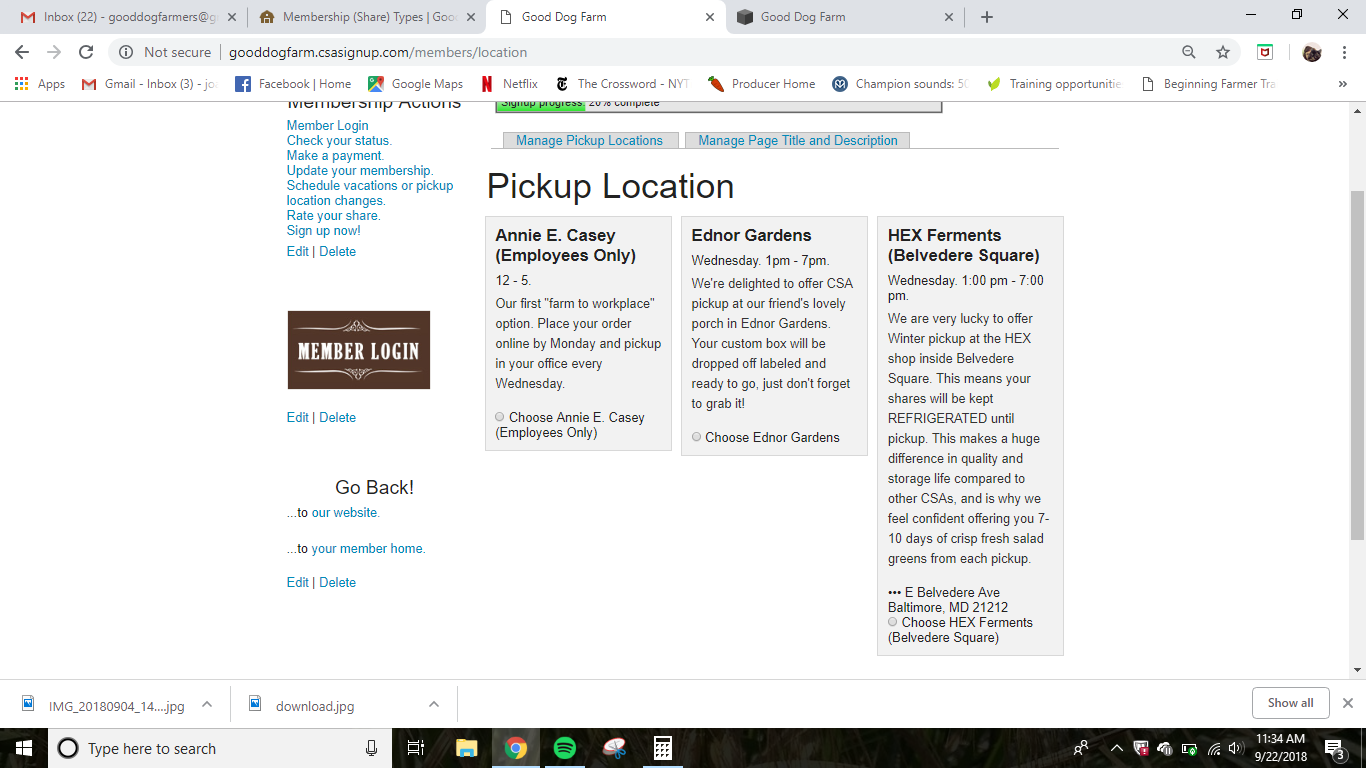Happy fall, everyone! We’ve been enjoying some truly beautiful days to be outside of late. We hope you too have found opportunities to enjoy the weather. There’s still plenty of harvesting to do around here, and there are still new crops popping up in your choices. There’s still 2 weeks until we dig sweet potatoes, and you should also be seeing Napa cabbage, rainbow carrots, fennel, and watermelon radishes grace your plate before season’s end.
We’ve also added a “mole” mix of 6 Mexican chile peppers to make a mole sauce or to roast for a homemade chili paste.
I love the flavors of fall, but I especially enjoy the way the flavors and textures deepen and become richer as the weather cools. Our cool and tender French breakfast radishes have finished, but we have just added our stubby purple daikons, whose hearty flavor and spicy zing really adds something in cooler months, especially when roasted. You might also notice that our salad mix grows a bit more robust and diverse each week as new mustards, Asian cabbages, and lettuces become available, adding new flavors and textures to the mix. One of the best moments of fall, though, is harvesting young ginger, as we did this week. Ginger is a tropical perennial that grows and propagates itself via large starchy rhizomes, not unlike bamboo or sweet potatoes. The hardy, thick-skinned stuff we get at the store is older growth, which if planted will sprout new eyes that make fresh, tender offshoots with tall palm-like leaves. Our climate is not suitable to growing ginger perennially. However, high tunnels give us just enough time to produce these fresh, uncured “hands” of young ginger. Even while harvesting, its aroma is intoxicating, and it adds a wonderfully unique touch to basically anything you might cook this time of year. It pairs especially well with the rich flavors of winter squash or baked apples, or is great as the star of the show in pickles or a very quick lo-mein. Young ginger is much less fibrous than storage ginger, so cook for as little time as possible to best enjoy it. It only lasts one week to 10 days, but it can be quick-pickled with the “Six Seasons” recipe we shared in the spring.
What we’re eating
Other than putting ginger in everything, we’re in salad and winter squash bliss around here. Last night, Joanna made a squash risotto recipe to die for. Follow a standard recipe like this, with a couple tweaks:
Add in half a teaspoon of red pepper flakes with the onion and oil for a touch of heat.
Grating the squash instead of cubing adds an incredibly rich, buttery consistency to the whole finished dish.
Instead of discarding them, add the scooped out guts of the squash, plus an extra cup of grated squash, to your simmering stock for added flavor (don’t add this squash back into the risotto, though).
Stir in a half teaspoon of grated young ginger with the Parmesan for an extra zip.
Make enough for leftovers, and then turn them into arancini!
Another revelation was this caper-raisin-anchovy salad dressing shown below. It’s certainly not an intuitive blend, but the mix of sweetness and umami is a perfect companion to the hearty, ragged greens we’re getting while day-time temps are still in the 70s and 80s. Try it with a kale salad, mesclun, or kohlrabi.
Again, from Joshua McFadden’s excellent “Six Seasons.”
Winter season
We mentioned last week that we are now opening up winter season CSA sign-ups. Our CSA runs year-round using the same format, except when we take off most of the month of May, while we are frantically planting and waiting for our Spring crops to come in. We do our best to offer salad greens, lettuce, onions, garlic, carrots, sweet potatoes, apples, and eggs all winter, and we will have winter squash, potatoes, radishes, and kohlrabi along as they keep—usually into February. The official start of our new season is November 28, the Wednesday after Thanksgiving. Your existing funds will roll over into the new season, and as always, you can add additional funds at any time.
However, we do ask that if you are planning to continue enjoying our vegetables throughout the winter, that you let us know by putting down a $25 deposit (or purchasing any size winter share) before November 1st. This is very important because (a) it lets us know if we need to recruit additional members for the winter season, (b) it helps us gauge interest at our various pickup locations, and (c) it’s important for operating online ordering on the Small Farm Central platform. Instructions for signing up for the winter season are below. Thanks!






